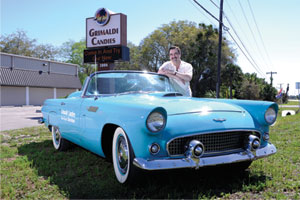OEE! No, that’s not all of us here in Chicago screaming spring is finally here, although it eerily sounds close enough. Rather, it stands for Overall Equipment Effectiveness (OEE) and it’s an acronym I expect to encounter more often than not at the upcoming interpack show in Dusseldorf.
Yes, that’s right, the largest triennial packaging exhibition in the world, which also showcases the most comprehensive display of confectionery processing and packaging equipment, is upon us. It’s amazing how confectionery equipment suppliers are able to showcase their engineering élan, experience, and innovations every three years.

More importantly, they are doing it in partnership with their customers, working more closely with confectionery manufacturers now more than ever. It’s no longer a case of what kinds of bells and whistles you have to show me. Now, it’s all about the numbers — and we’re not talking just price, mind you.
In today’s leaner, faster and tougher landscape, customers are interested in: energy savings; ease of sanitation; operational efficiency; mobility and flexibility; and maintenance costs. And, as I understand it, OEE can help those same manufacturers determine whether a significant investment can prove to be a long-term significant savings.
Developed by Seeichi Nakajima in the 1960s to evaluate how effective a manufacturing process is, OEE takes a look at availability (operating time/planned production time), performance (ideal cycle time/(operating time/total pieces) and quality (good pieces/total pieces).
When calculating availability, down time loss — be it for a changeover or sanitation — plays a key role. In performance, ideal cycle time represents the optimal run rate a machine is projected for. And quality, well, that’s pretty self-explanatory — waste not, want not.
Thus, the OEE number is a matter of multiplying availability times performance times quality. It’s simply another tool to help manufacturers monitor efficiency in their operations. What’s amazing to me is that equipment suppliers are now talking the same language and using it in their presentations.
In the past, the focus seemed to be solely on output. The more output, the better. Well, the increased costs of energy, labor, safety, traceability, government regulations and packaging, coupled with the ever-increasing expectations from consumers (ingredient formulation, portion control, product development, etc.) have made manufacturers take notice. And plant managers and executives want to know one thing: Is that line making money?
I know, that certainly takes the romance out of candy making, doesn’t it? No need to worry about that, however. There’s still plenty of that going on in the industry, as evidenced by my tour of Florida. From the handiwork found in Norman Love’s artistic truffles, to the passion for chocolate demonstrated by Baruch and Edgar Schaked and carrying through the creative product development efforts seen in Grimaldi Candies, craftsmanship and creativity still rule.
It’s also clear that technique and technology can work together. A review of this month’s cover story as well as the interpack preferred suppliers guide demonstrates that clearly.

